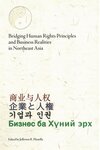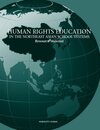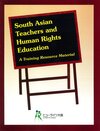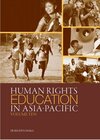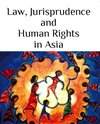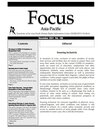Japan
The initiative of the Kansai SDGs Citizens’ Agenda (K-SDGs) of formulating a Sustainable Development Goals Agenda (SDGs Agenda) began in March 2018 based on a proposal from a non-governmental organization (NGO) at a reception celebrating the 30th anniversary of the establishment of the Kansai NGO Council. It was motivated by the Council’s aspiration to communicate the “civil society” perspective on SDGs to the public. The initiative involves members of the civil society giving thought on the issues that the SDGs seek to solve, raising their voices, sharing their thoughts, and becoming aware of and owning the fundamental significance of the SDGs.
Inspiration from Hokkaido
Sapporo Alternative School “Yu” in Hokkaido published the pamphlet “SDGs – Setting Local Goals for Hokkaido” in March 2017, which compiled the outcomes of workshops organized over the year. In the workshops, discussions were held on topics such as poverty and disparities, labor and employment/consumption and production, gender/minorities, Hokkaido and Ainu (the indigenous people), energy, climate change/marine resources, bio-diversity, quality education/ESD and international cooperation and peace. Local goals and action plans were then formulated. Behind these efforts was the conviction that the SDGs were there to affirm the everyday wishes of citizens, such as the hope “to eliminate poverty,” ”to achieve respect for human rights,” “to protect the environment” and “to create a peaceful world,” as global common values and goals, and that each one of us as citizens was the main actor in achieving the 2030 Agenda, “Transforming the World.”
We did not want to miss the opportunity to learn from this experience, so the Kansai NGO Council invited KOIZUMI Masahiro, the Secretary-General of “Yu” to start our own project. A kick-off meeting for K-SDGs was held on 7 July 2018 at the Higobashi Kanpo Building with forty participants. In addition to the discussion of experiences in Sapporo, KOIZUMI presented a new pamphlet, “SDGs – Setting Local Goals for Hokkaido 2: SDGs in Ainu Context” (published in March 2018). KOIZUMI’s message was powerful enough for every participant to keep the SDGs motto “leave no one behind” in mind and to realize the importance of focusing SDGs on local issues from the perspective of social inclusion.
Efforts to Formulate the Citizens’ Agenda
The following workshops were organized for K-SDGs:
• Session 1: Human Rights, Gender
11 September 2018, Seminar Room, St. Paul’s Church, Osaka, with thirty-six participants, and MIWA Atsuko as speaker;
• Session 2: Disasters
27 October 2018, OSAKA YMCA, with forty participants, and YOSHITSUBAKI Masamichi as speaker;
• Session 3: Multiculturalism
8 December 2018, OSAKA YMCA, with forty-five participants and TAJIRI Tadakuni as speaker;
• Session 4: Education
26 January 2019, Higobashi Kanpo Building, with forty participants and NITTA Kazuhiro as speaker;
• Session 5: Sustainable Working Style/Business and Human Rights
9 February 2019, Higobashi Kanpo Building, with forty participants and OKAJIMA Katsuki and MATSUOKA Hideki as speakers;
• Session 6: Environment
April 2019, Higobashi Kanpo Building, with sixteen participants and SUGIMOTO Ikuo as speaker.
In the workshops, participants discussed the issues after listening to the speakers, and everyone was requested to write about “My Vision of 2030.”
Group discussion during a workshop. Photo: Kansai NGO Council
On 24 December, 2018, at OSAKA YMCA, a workshop titled “Kick-off Project for Agenda Formulation by High-School and University Students,” was organized as one of the programs in the 5th One World Festival for Youth with fifty participants.
Politics and Economics in Line with the SDGs
The United Nations adopted in September 2015 the resolution, “Transforming our world: the 2030 Agenda for Sustainable Development.” In Japan, the Sustainable Development Goals (SDGs) Promotion Headquarters headed by the Prime Minister was convened in May 2016, and in December of the same year, the SDGs Implementation Guiding Principles were adopted. The Japan Business Federation (Keidanren) revised its Charter of Corporate Behavior in November 2017 to integrate the SDGs. The SDGs were even used to attract the World Expo to be held in 2025 in Japan, and there have been increasing arguments that SDGs will contribute to economic vitalization.
The SDGs Implementation Guiding Principles raise the principles of universality, inclusiveness, participatory approach, integrated approach, transparency and accountability for the implementation of the SDGs. The Guiding Principles state that government policies should be made in accordance with the SDGs’ perspectives and the government should cooperate with a wide range of stakeholders in achieving the SDGs. They also explicitly note that “in the implementation of the Agenda, NGOs and NPOs will likewise play an extremely important role” in facilitating “collaboration with vulnerable people and advocate on potential challenges and policy options through their networks at the global and regional levels.” The Guiding Principles name not only “NPOs and NGOs” but also “private companies,” “consumers,” “local governments,” “the science community,” and “labor unions” as stakeholders.
The SDGs pledge to “leave no one behind” and indicate that it is important to balance the three dimensions of sustainable development, namely, the environmental, social and economic dimensions. This is because no one can dispute the fact that we are still a long way from achieving gender equality, and that the environmental, social and economic dimensions are very much out of balance. And that is the reason that the significance of the agreement on the seventeen goals and one hundred sixty-nine targets of the SDGs after discussions in the UN is immeasurably significant, and neither the government nor the business sector can ignore them.
The Kansai SDGs Platform was launched in December 2017, led by JICA Kansai. We were asked to be involved, as the Platform wanted NGOs to be part of the management, and so the Deputy-Representative of the Kansai NGO Council became a member of the Platform’s organizing committee. We will work as partners with the participating organizations in fulfilling our role of monitoring initiatives such as the World Expo 2025 on whether they are managed in line with the SDGs, and whether they integrate the economic, environmental and social (particularly regarding human rights) dimensions, in order to achieve the SDGs.
Future of Kansai SDGs Citizens’ Agenda
We would like to introduce some voices of “My Vision of 2030”: “The proportion of parliamentarians by gender should be 50-50,” “achieving a quota system,” “guaranteeing opportunities to learn about social minorities,” “leaving office at the end of office hours,” “gender equality in house work, child care and other care work,” “no child on waiting list for child care facilities,” “guaranteeing equal pay for equal work and equal pay for work of equal value to women and non-Japanese workers,” “implementation of basic income on a trial basis,” “a society in which diverse people can work together,” “avoid using the word ‘normal’,” “a society in which non-Japanese residents join community meetings,” “networking in preparation for disasters,” “trying to help anyone in trouble,” “enjoying differences,” “providing in-service training for teachers/educators,” “learning about diversity, dialogue and peace, global citizenship,” “aiming for 100 percent renewable energy,” “a town with 0 percent disposable containers,” “alternative consumer life to pass on to the next generation.”
These examples of voices express our aspiration as citizens to face the lives of the people and strive towards solving the issues in those lives; indeed, the issues are there right at our feet, and addressing those issues is what the realization of the SDGs is about. With people from various backgrounds coming together and sharing the views, we are able to clarify our goals of how and what 2030 should be.
The Osaka Citizens’ Summit was held on 25-26 June 2019, just before the G20 Summit Meeting. K-SDGs was in charge of organizing the workshop “Community and SDGs.” Approximately ninety people participated, and while we reported on our year-long activity, panelists from Okinawa, Okayama, Toyama and Hokkaido prefectures spoke about the efforts being made in their local communities. We shared our views on the importance of civil society participation in the decision-making process towards achieving the SDGs. Participants also raised the significance of addressing issues of disparities and poverty as well as issues faced by minorities.
The C20 (Civil20) Meeting at which the civil society presented its policy proposals to the G20 Summit was held on 21 to 23 April 2019 in Tokyo, and the Kansai NGO Council was given an opportunity to report on the K-SDGs. After our report, participants from China, New Zealand and Mongolia came up to tell us that they would also like to start formulating local agenda in their own local communities. It seems that the simple structure of our initiative―community members sharing the awareness of citizenship can launch their own initiatives by gathering to talk―attracted their interest.
In the process of presenting our K-SDGs at the C20 and the Osaka Citizens’ Summit, we have clearly observed that citizenship and local issues are firmly related, and we are determined to move to the next stage by sharing our challenges and outcomes with fellow citizens in other communities. There is a growing tendency to understand the SDGs as being relevant to each one of us, as well as awareness of the importance of sending the voices of the citizens to the policy decision-making processes.
In the meantime, we will continue our discussions regarding K-SDGs, and join hands with consumers, labor unions and schools, to create an agenda that reflects the citizens’ voices. We welcome your participation.
Iwasaki Hiroyasu is an Auditor of Kansai NGO Council; while Takahashi Miwako is a Director and the Secretary-General of the Council.
For further information, please contact: Kansai NGO Council, e-mail: knc@kansaingo.net; http://kansaingo.net/en/.
What do people, many of whom likely unfamiliar with the words, imagine when they hear “pregnancy conflicts?” Perhaps they think of conflicts of “having or not having” or “raising or not raising” a child.
Piccolare was established in Tokyo as a non-governmental organization with a mission: to stand by and extend support to all women and girls who are in trouble or unsure of what to do with their pregnancy. The word “piccolare” was created by combining the words piko (navel, center or core in Hawaiian) and coccolare (to cuddle, to treat with great care in Italian). The name of the organization reflects its mission.
To the young women and girls, the “conflicts” they bring to Piccolare are matters of life or death such as “I will lose my job, if they find out about my pregnancy,” “I will lose the place where I stay,”“I want to go to the hospital, but I cannot afford to,” or “Is there any hospital that would accept me?”
In this society, there are “pregnancy conflicts” arising from fear of losing employment or places to live or being deprived of the life they have been barely maintaining. The pregnant women and girls who have these problems are mostly young, between ten to twenty years old.
A nineteen-year-old pregnant woman, calling herself “Stray Pregnant Woman” who worked six to seven days a week as a day worker and stayed at an internet café at night, spoke of her fear of being refused by hospitals. A twenty-two-year old pregnant woman contacted Piccolare during winter while trying to keep warm by staying close to a vending machine in a park. She suffered violence from a man she turned to for help. An eighteen-year-old feared that she might end up not being able to contact anyone because she could no longer pay the phone fee for her smartphone.
Women and girls who worry about their pregnancy and yet unable to consult anyone and bear the “conflicts” within them are not few. And they are not in distant and unknown places but are somewhere nearby.
Death from Abuse and Teenage Pregnancies
Government reports show that, among cases of death of infants due to abuse, the proportion of teenage mothers is significantly high. The proportion of these teenage mothers in the total number of births is stable at around 1.3 percent, while the rate of pregnancy among youth involved in cases of infant death due to abuse is at 17 percent (excluding death in collective suicides).1 Many deaths of infants due to abuse happen on the day they were born, with fourteen cases out of fifty-two reported cases.2 Of the fourteen cases, eleven infants were abused by their own mothers, seven of whom were twenty-four years old or younger. And in all cases, the mothers gave birth not in a medical facility but in the toilet or bathroom at home.
Approximately 90 percent have not been issued the Mother and Child Health Handbook, or received pre-natal health checkups.3 The deaths can be seen as the result of women and girls giving birth alone, unable to reach out to anyone.
Imagining Giving Birth Alone
Giving birth at the risk of one’s own life must have been a frightening experience.
The 2017 government report states that “The feeling of not wanting anyone to know about this [pregnancy] was stronger than the feeling of wanting to help the baby.” These words express the degree of their desperation.
If someone found out their pregnancy, they might completely lose their livelihood.
Are These Women and Girls the Abusers?
Why did they have to give birth at home on their own? Why did not anybody notice their pregnancy? Why did they have to continue their pregnancy?
Perhaps they would not have ended up as abusers if the methods of contraception were affordable and available, if they did not have to pay for the cost of giving birth, if the society had in place mechanisms that would prevent the isolation of the pregnant women and girls.
I hope that we will be more aware that it is this society that is the real abuser that caused the deaths of the children.
Pregnancies: Responsibility of the Women and Girls Alone?
Pregnant because of enjo kosai (being paid for dates), a twenty-year old woman began suffering morning sickness and was unable to earn a living. She started staying at her acquaintances’ homes, one after the other. By the time she approached Piccolare, the only thing she had eaten or drank for five days was orange juice. She was about to leave the place she was staying in for a few days. When we picked her up from the place, her lips were cracked and she could barely sit up.
Piccolare is often consulted by “drifting” pregnant young women and girls who have no place to stay and move from home to home of friends or acquaintances who are not their partners, as well as by teenage girls who may fall into such situation. Without the pregnancy, they could have continued earning income and having a place to stay.
Behind most of these “drifting” women and girls are problems that they cannot solve by themselves such as poverty, abuse, domestic violence, other forms of violence, precarious employment, mental illness and various forms of social exclusion.
Many of the women and girls who managed to come to Piccolare had been unable to ask anyone for help. When people are continuously exposed to poverty, abuse, domestic violence and other forms of violence, they become uncertain on whether they are allowed to ask for help or not. That is why they have been managing on their own, despite numerous difficulties.
But since pregnancy is not a matter they can face on their own, they were forced to ask for help.
We greet each woman or girl with
Thank you for coming to consult us. From here on, let us think together with you about what to do next.
We listen to what they want to do and accompany them to local public offices and medical institutions to secure the necessary social welfare support and services while negotiating with them so that they can avoid suffering any disadvantages. We accompany them to local public offices and medical institutions to secure the necessary social welfare resources. When they are finally able to see a path to move forward, many of them would say, “I thought I was going to be scolded, but I was surprised that I was thanked and praised.” They thought they would be berated because they believed it was their fault that they became pregnant.
The initial contact with the “Stray Pregnant Woman” was through an e-mail message. When I read the words “Stray Pregnant Woman,” I could not forget how devastated I was thinking about the desperation and isolation she must have felt. In her e-mail she wrote that she saw on the internet that “stray pregnant women” were refused by hospitals, and this was all their fault. Even though she could not get pregnant on her own, she wrote that it was all her fault. Responsibility is rarely sought from the other party in the pregnancy, and instead placed on the pregnant women alone. These women and girls find themselves in such unreasonable situation.
Is pregnancy the responsibility of women and girls alone? Why do pregnant women and girls have to take responsibility for the pregnancies? And why are the abusers in infant deaths all mothers who gave birth to them?
You cannot get pregnant by yourself. Why is this simple truth forgotten in this society?
Irrationality of Stigmatization of Contraceptives and Abortion
There are other irrationalities involving “pregnancy conflicts.”
In Japan, access to contraception and abortion is extremely poor. A campaign to improve access to emergency contraceptive pills collected 67,000 signatures, which were submitted to the government with a letter requesting the improvement of access. I hope immediate action is taken on this matter.
Under the Maternal Health Act, abortion is allowed only for health or economic reasons and in cases of rape. In these cases, induced abortion is allowed to be performed by a designated doctor.4
This irrationality isolates the pregnant women and girls who suffer from inner conflicts, leads to the way the society looks at them and shuts them out.
Changing the Way the Pregnant Women and Girls are Viewed
In May 2020, Piccolare cooperated with another non-governmental organization, PIECES, to open a place called PISARA for young pregnant women and girls who have no place to go and are “drifting.”
A pregnant girl who did not get along with her mother and ran away repeatedly from home spent two restful days at the place. We sent her back to her home, telling her that she could come back to PISARA any time when things got difficult. But she stayed home, gave birth safely, is now raising her child and working towards becoming independent.
Just being able to know that you have a safe place to go any time you want, may empower you to live through the days.
If so, when society’s positive view of these women and girls inspires safety, they may find it easier to live, even when their circumstances are severe. For this purpose, it is necessary to make the problems of these women and girls known and visible to the public. Piccolare is currently preparing a “White Paper on Pregnancy Conflicts – from the consultation desk of Pregnancy SOS Tokyo” to be published in December 2020.
Kiyomi Matsushita is a Social Worker and a staffmember for Consultation Support and Board Member of Piccolare.
For further information, please contact: Kiyomi Matsushita, Piccolare, 2-6-14, Senkawa, Toshima-ku, Tokyo 171-0041 Japan; ph 050-3134-4479; e-mail: info@piccolare.org; https://piccolare.org/.
Endnotes
1 See 14th Report on the Deaths by Child Abuse, Special Committee on Child Abuse (in Japanese), August 2018, www.mhlw.go.jp/stf/seisakunitsuite/bunya/0000173329_00001.html.
2 See 15th Report on the Deaths by Child Abuse, Special Committee on Child Abuse (in Japanese), August 2019, www.mhlw.go.jp/stf/seisakunitsuite/bunya/0000190801_00003.html.
3 14th Report on the Deaths by Child Abuse, Special Committee on Child Abuse, op. cit.
4 See Article 14(1), Chapter III, Maternal Health Protection, Maternal Health Act, www.japaneselawtranslation.go.jp/law/detail/?id=2603&vm=04&re=02.
With ten more years to go before the deadline for achieving the Sustainable Development Goals (SDGs) in 2030, local ordinances are extremely important in achieving those goals in the local community.
For several years, men in suit or casual clothing would approach young women to recruit them to work in the sex industry at the train stations in Okayama and Kurashiki cities in Okayama Prefecture. Many women have been targeted day and night in an organized manner. Without any ordinance in Okayama Prefecture prohibiting these acts, the police could not take any action against these men.
Many students of a women’s university pass through the Okayama station on their way to school. Since I teach in this university, I conducted a simple survey among students in my class on this problem and found out that approximately two-thirds of the students had experienced aggressive acts of recruitment.
Their experiences included escaping through the station ticket gates because they were persistently followed, being closely followed all the way from the West Exit to the East Exit, being offered to work for a hostess bar once a week, being called out five times by the same person, being followed around and persistently told that she could make 500,000 Yen (if she worked in the sex industry).
Conflict with Goals 4, 5 and 11
The Okayama Prefecture is often considered as having advanced programs on SDGs. Yet the daily persistent aggressive acts of recruitment by men around the train stations is nothing but “violence” against the targeted female students. This situation goes against Goal 5 of the SDGs (gender equality), especially Target 5.2 on elimination of “all forms of violence against all women and girls in public and private spheres.”
Also, the female students face aggressive acts of recruitment around the Okayama station on their way to school every day. This results in (1) feeling uncomfortable when they go to school, (2) having bad feeling about this problem while studying at the university, (3) and fearing the recruiters while taking the train to go home. This situation also contravenes Target (4a) of providing “safe, non-violent, inclusive and effective learning environments for all” of Goal 4 (education) of the SDGs.
Furthermore, the situation around the stations of Okayama and Kurashiki, where blatant and pernicious aggressive acts of recruitment happen continuously day and night seven days a week, is against Target 11.7 of providing “universal access to safe, inclusive and accessible, green and public spaces, particularly for women and children, older persons and persons with disabilities” of Goal 11 (sustainable cities and human settlements).
If Okayama Prefecture values its image as a place with advanced programs on SDGs, it should improve this situation.
It can be argued that in a democratic country such as Japan these acts cannot be restricted because they are economic activities. But the nature of these activities should be sufficient basis for their prohibition. Indeed, this terrible situation around the two stations, which are gateways to Okayama Prefecture for many visitors for business and tourism, is damaging the image of the prefecture as a whole that leads to considerable economic loss.
The harm caused by these aggressive acts of recruitment, seen in urban commercial areas in the country, cannot be addressed by a uniform national law. Local ordinances are needed to regulate or prohibit these acts in a manner appropriate to the area.
Amending an Ordinance
The move to amend the Anti-nuisance Ordinance of Okayama Prefecture by adding a prohibition on aggressive acts of recruitment in the prefecture began in 2018.
People in communities around Kurashiki and Okayama stations petitioned the Prefectural Council and its members and the prefectural government to prohibit the increasingly aggravating “solicitations” related to the sex industry. As the harms of aggressive acts of recruitment targeting students became apparent, the Prefectural Police prepared a draft amendment of the prefectural Ordinance.
In May 2018, a Member of the Prefectural Council raised the issue at the plenary session in a formal question to the Governor and the Chief of the Prefectural Police, with students watching from the public gallery. The issue was repeated in further questions. The Prefectural Police reacted positively, and for almost a year since then, the police focused on patrolling areas around Kurashiki Station. The Chief of the Prefectural Police himself inspected the area.
As a result, in November 2018, the Prefectural Police submitted an outline of the draft amendment of the Anti-nuisance Ordinance to the Prefectural Council Committee on Industry, Labor and Police. The draft amendment included an expansion of the scope of prohibition of surreptitious photographing, expansion of businesses covered under the prohibition of solicitation and recruitment, prohibition of recruiting and standing by to recruit, as well as sanctions for employers of persons engaging in these acts.
The public was invited to submit comments on the draft amendment from 22 November to 21 December 2018 resulting in two hundred forty-six comments, all supporting the proposed amendment and no single opposition. This was the largest number of responses received among the more than three hundred invitations for public comment on prefectural policy plans including draft ordinances. It seems that many students at the university voluntarily sent comments through the prefectural website.
Finally, on 3 July 2019, as the students watched from the public gallery, the draft amendment of the Anti-nuisance Ordinance was adopted in full.
The Experience of “Changing” the Ordinance
While the draft amendment was being prepared and discussed, the students participated in surveys, voluntarily observed the Council sessions, and submitted comments. These experiences seem to have enabled them to gain political empowerment, and a sense of being politically effective. Majority of the students who responded to a questionnaire conducted soon after the adoption of the amendment expressed this view. Below are some of their responses in the questionnairea:
I was able to reaffirm that when each of us raised our voice, it would reach the government, as it did in this case of the Anti-nuisance Ordinance. So, I thought that when more students vote, there may be more policies for students.
xxx xxx xxx
A year ago, when I was asked to respond to the survey, I had misgivings about whether it was meaningful. But now that the Anti-nuisance Ordinance was adopted, I learned firsthand that my views could be reflected in public policy, and so I thought I should go to vote.
Now students are more interested and actively studying local Councils and ordinances. One student wrote in her response, “There is an area around the shopping arcade in Takamatsu where I often go that is dangerous … so I am thinking of looking into the ordinances in the place.”
Continuing Harm and Uncertainties Ahead
The Ordinance will enter into force on 1 October 2020. Until then, the aggressive acts of recruitment continue. This was expressed in the questionnaire:
Two men came up to me and asked whether I would like to work in Tokyo and Osaka. They said they will contact me through Line and Instagram.
xxx xxx xxx
A girl was approached at Okayama Station, and was being followed until she went through the ticket gate. The act was blatant, even though it was daytime. I really hoped the Ordinance would be enforced soon.
Many students were also worried whether or not the police will seriously control these acts after the Ordinance came into force. Some wrote in the questionnaire:
I am unsure whether the police will enforce the Ordinance after it is enacted. I hope that it will not be just at the beginning, when it would have public attention.
xxx xxx xxx
I am concerned, whether the police will come and patrol each time the recruitment occurs.
It is therefore necessary to continue monitoring the activities of these men and follow-up on the issue.
After 1 October 2020, the Prefectural Police will be responsible for addressing the issue, and the harms and burdens on the individual will no doubt decrease significantly. If the police are found to be negligent, a complaint may be filed (under Article 79 of the Police Act) to the Okayama Prefectural Public Safety Commission (consisting of academics and lawyers) which oversees the Prefectural Police. The Commission also has a high regard for the draft amendment of the Ordinance, calling it “groundbreaking.”1
Creating /changing Rules to Achieve SDGs
In order to achieve the SDGs, it is certainly important to make various efforts under existing ordinances. But in cases where existing ordinances are causing harm, or when SDGs could be achieved by changing ordinances, there should definitely be attempts at enacting and/or amending the ordinances themselves. Calling for the enactment/amendment of ordinances would not require a budget or subsidy. All that is needed is to bring together the general public’s dissatisfaction and the voices of the victims and appeal to the Council or their Members to act on the issue, and Members and government officials who have the expertise on the matter would prepare the draft ordinance. This will also certainly lead to political empowerment of the people.
With local ordinances, the size of the support does not have to be as large as when enacting national laws or their amendments. They involve concerns that are closely related to daily life (including going to and from work, school and marketplace), and with a little effort, they can attract the attention of the residents and students. The outcome can also be more easily felt. By enacting and/or amending ordinances, we can change the local community for the better and make progress in achieving the SDGs in the local areas more efficiently as we near the achievement date.
Endnote
1. Based on minutes of the regular meeting of the Public Safety Commission, 25 April 2019.
Eiji Hamanishi is an Associate Professor in the Department of Contemporary Sociological Studies, Faculty of Literature, Notre Dame Seishin University (NDSU) in Okayama City. He is also the Chief of the NDSU Center for Regional Collaboration and SDGs Promotion.
For more information, please contact Eiji Hamanishi through this e-mail address: hamanishi@post.ndsu.ac.jp.
Since the beginning of 2020, the new coronavirus (COVID-19) started to spread in many parts of the world at an incredible speed and the number of infected persons exponentially increased. On 11 March 2020, the World Health Organization (WHO) recognized COVID-19 as a pandemic. The entire world has been seriously affected by the pandemic. No country and society have been spared.
Responses to the pandemic and measures to contain the spread of COVID-19 have been drastic in many countries, including lockdowns and quarantines. In Japan, the government declared on 16 April 2020 a state of emergency for the entire country that restricted people’s movement and business activities.
Under the emergency measures, people have experienced various difficulties, not only being exposed to the risk of virus infection but also loss of jobs and income, suspension or restriction of civil, political, economic, social and cultural activities. Damages are widely inflicted on people in general, but particularly and seriously on the vulnerable and socially marginalized people.
From the beginning of the pandemic, the United Nations High Commissioner for Human Rights stressed that “human dignity and rights need to be front and centre” in the governments’ effort to mitigate the negative impact on people and their lives provoked by the anti-pandemic measures. Other United Nations agencies issued similar statements and guidelines to deal with the pandemic. International, national and local non-governmental organizations (NGOs) also take this crisis caused by the pandemic as a serious human rights concern and have appealed to the governments to protect and respect human rights especially at this time of pandemic.
In this situation of the pandemic, civil society organizations including NGOs have important roles to play. Acutely aware of this, the Asia-Pacific Human Rights Information Center (HURIGHTS OSAKA) has taken up its role as a human rights information center. It has been accumulating and posting as much information as possible on human rights and the new coronavirus pandemic on its Japanese-language website. It aims to focus on the human rights perspective of the information collected and disseminated and to draw attention of the national government, local authorities, those working in the frontlines and the general public in Japan to the difficulties experienced by the affected people and also to their appeals directed to the authorities.
HURIGHTS OSAKA seriously takes up this role as a human rights information center.
HURIGHTS OSAKA - Inception and Transformation
HURIGHTS OSAKA was not what it is now. It has come through a few substantial changes since its establishment.
HURIGHTS OSAKA was established in 1994 by the initiative of a group of civil society organizations in Osaka, joined by an association of labor unions, a business association, and the association of mayors of cities and townships of Osaka Prefecture. The governments of the Prefecture and the City of Osaka supported its establishment as a public foundation with substantive financial, administrative and logistical contribution. At the time of its establishment, HURIGHTS OSAKA was conceived as a human rights information center aiming at actively developing international cooperation with human rights organizations in the Asia Pacific region as well as cultivating awareness of human rights among the local general public in Japan, with a certain degree of official involvement of the Osaka Prefecture and the City of Osaka. In a way, HURIGHTS OSAKA acted as a close partner of the Osaka prefectural and city governments in implementing human rights-related policies and projects.
The original aims of HURIGHTS OSAKA were set as wide and far reaching as follows: 1. to promote human rights in the Asia Pacific region; 2. to contribute to the advancement of international human rights protection and promotion with Asia Pacific specific inputs; 3. to ensure inclusion of human rights perspectives in the Japanese official international cooperation and contribution in the Asia Pacific region; and 4. to build awareness among the general public of the international standards of human rights.
The situation surrounding HURIGHTS OSAKA changed drastically with the election of a new Governor of Osaka Prefecture in February 2008. The Governor considered support to a large number of organizations incorporated and registered in the Prefecture for social, cultural and human rights purposes and activities as a “waste of public funds” and vowed to discontinue it. HURIGHTS OSAKA was one of these organizations. Stating that no justifiable reason was found to continue substantial support to HURIGHTS OSAKA, the Prefecture decided to discontinue completely its financial, administrative and logistic support to HURIGHTS OSAKA from the fiscal year of 2009. Without hesitation, Osaka City also withdrew support to HURIGHTS OSAKA. The sudden loss of substantial support from both local governments left HURIGHTS OSAKA with no choice but to reconsider its role and to work out its operational strategy. Downsizing the organizational setup and budget, it had to prioritize projects and operations. It reached a conclusion that HURIGHTS OSAKA should focus more on the needs of people, become more actively responsive to the local human rights situations and issues and reorganize its information management using the information and communication technology. Consequently, it had to reduce its international engagements such as organizing international human rights conferences and seminars as well as participating in human rights events outside Japan. It came to concentrate more on information management and awareness building on human rights issues and activities. Relying on its own funds, HURIGHTS OSAKA was reborn as a civil society organization, no more dependent on the support from the Osaka Prefecture and the City of Osaka. It was a new start as an independent “human rights information center.”
In 2011, HURIGHTS OSAKA experienced another organizational reform following the revision of the law governing public interest corporations. As an organization incorporated and registered in Osaka Prefecture, HURIGHTS OSAKA put more emphasis on staying close to local human rights issues and contributing to the local needs. This included responding to the needs of the business sector in Osaka in building human rights awareness and incorporating respect for human rights in the business practice.
HURIGHTS OSAKA’s Role and the COVID-19 Pandemic
HURIGHTS OSAKA is expected to remain attentive to the needs of people.
In the crisis of the COVID-19 pandemic, the vulnerable and socially neglected people have been suffering most. This is certainly the case in Japan. These people are, just to name a few: people with underlying health conditions; people in poverty, including single mothers and children; children without adequate schooling; the aged; people with disabilities; homeless people; those with unstable employment and the jobless; migrants and their families; irregular immigrants and applicants for refugee status who are confined indefinitely in the detention centers; women facing widespread gender discrimination; those exposed to domestic violence. Their precarious conditions require the serious attention of the national government, the local authorities and the society in general.
HURIGHTS OSAKA definitely is in a position to accumulate information in cooperation with those organizations wishing to share their first-hand information on people who face extraordinary difficulty and disseminate it widely so that the society is informed of their plight and what needs to be done with an emphasis on the primary consideration of their human dignity and rights.
Furthermore, together with other civil society organizations, HURIGHTS OSAKA is able to send out human rights alert messages that emergency measures taken by the government and local authorities may infringe the human rights of people through unchecked utilization of surveillance methods and overwhelming control of people’s behavior and their personal data. The guarantee of access to information, transparency and accountability in the imposition of emergency measures to deal with the pandemic must be emphasized in such messages addressed to the government.
HURIGHTS OSAKA is expected to actively assume the role of a human rights information center, even if it sometimes has to disseminate information and messages inconvenient to the government and the local authorities. After all, HURIGHTS OSAKA has committed itself to protecting and promoting human dignity and human rights of all.
Osamu Shiraishi is the President of the Asia-Pacific Human Rights Information Center (HURIGHTS OSAKA).
For further information, please contact HURIGHTS OSAKA.
Celebrating the 100th Issue of FOCUS Asia-Pacific and Acting on SDGs
A celebration …
HURIGHTS OSAKA is celebrating the 100th issue of this newsletter. We sincerely acknowledge and appreciate the individuals and institutions in Asia and the Pacific whose articles for more than two decades shed light on emerging issues and concerns on human rights of their peoples and project the diversity of views and invaluable experiences that sustain the protection, promotion and realization of human rights in the region. The article of Mr Osamu Shiraishi, the President of HURIGHTS OSAKA, provides the context of this celebration.
On SDGs …
Are the Social Development Goals (SDGs) achievable? Are our SDG achievements so far significant? Hard questions. There are answers, but some are not pleasant to hear.
Sixteen global problems have to be solved, at least substantially, by 2030 with the help of international cooperation (Goal 17). These global problems are well-entrenched in our systems that they remain a huge challenge to all. Yet we still have to do what is needed. We still have to act to address them.
Problems ranging from abusive behavior of people in public places that compromise women's security such as in Okayama prefecture, abuse of foreign migrant workers who serve the economy in Southeast Asia, and deep-seated discrimination against sections of society such as Islamophobia in India are problems in our communities as much as global problems that we have to face.
If we have to act on these problems, we have to take concrete steps no matter how small. If our governments have to solve the problems they have to have the political will to implement the practical measures that have long been laid before them.
